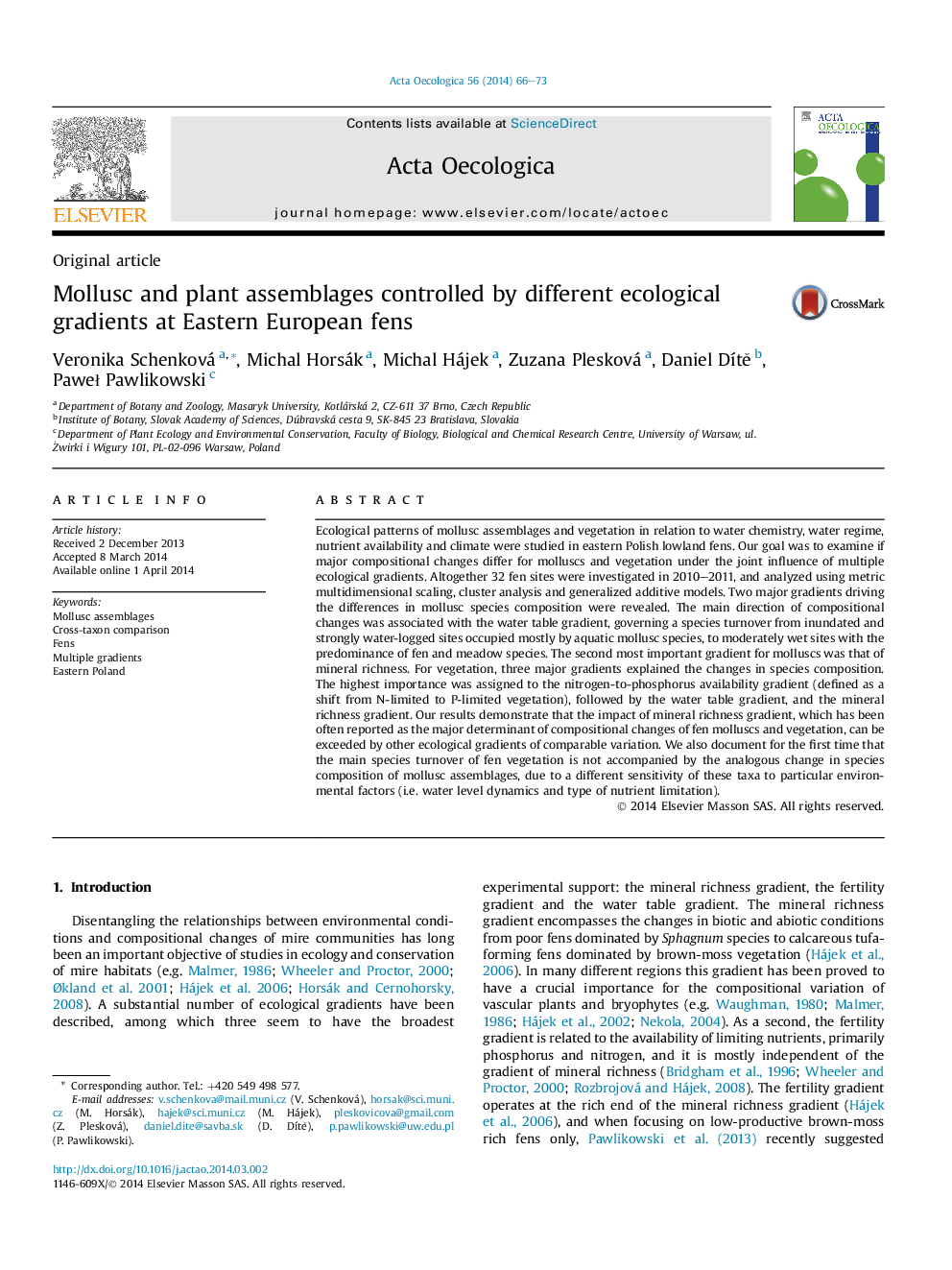| Article ID | Journal | Published Year | Pages | File Type |
|---|---|---|---|---|
| 4381028 | Acta Oecologica | 2014 | 8 Pages |
•We present the first extensive study of fen mollusc assemblages in Polish fens.•We compare ecological patterns of mollusc assemblages and vegetation.•Molluscs respond to the water table gradient, and to the mineral richness gradient.•Vegetation is governed by the nitrogen-to-phosphorus availability gradient.•Major compositional gradient of vegetation is not reflected by molluscs at all.
Ecological patterns of mollusc assemblages and vegetation in relation to water chemistry, water regime, nutrient availability and climate were studied in eastern Polish lowland fens. Our goal was to examine if major compositional changes differ for molluscs and vegetation under the joint influence of multiple ecological gradients. Altogether 32 fen sites were investigated in 2010–2011, and analyzed using metric multidimensional scaling, cluster analysis and generalized additive models. Two major gradients driving the differences in mollusc species composition were revealed. The main direction of compositional changes was associated with the water table gradient, governing a species turnover from inundated and strongly water-logged sites occupied mostly by aquatic mollusc species, to moderately wet sites with the predominance of fen and meadow species. The second most important gradient for molluscs was that of mineral richness. For vegetation, three major gradients explained the changes in species composition. The highest importance was assigned to the nitrogen-to-phosphorus availability gradient (defined as a shift from N-limited to P-limited vegetation), followed by the water table gradient, and the mineral richness gradient. Our results demonstrate that the impact of mineral richness gradient, which has been often reported as the major determinant of compositional changes of fen molluscs and vegetation, can be exceeded by other ecological gradients of comparable variation. We also document for the first time that the main species turnover of fen vegetation is not accompanied by the analogous change in species composition of mollusc assemblages, due to a different sensitivity of these taxa to particular environmental factors (i.e. water level dynamics and type of nutrient limitation).
